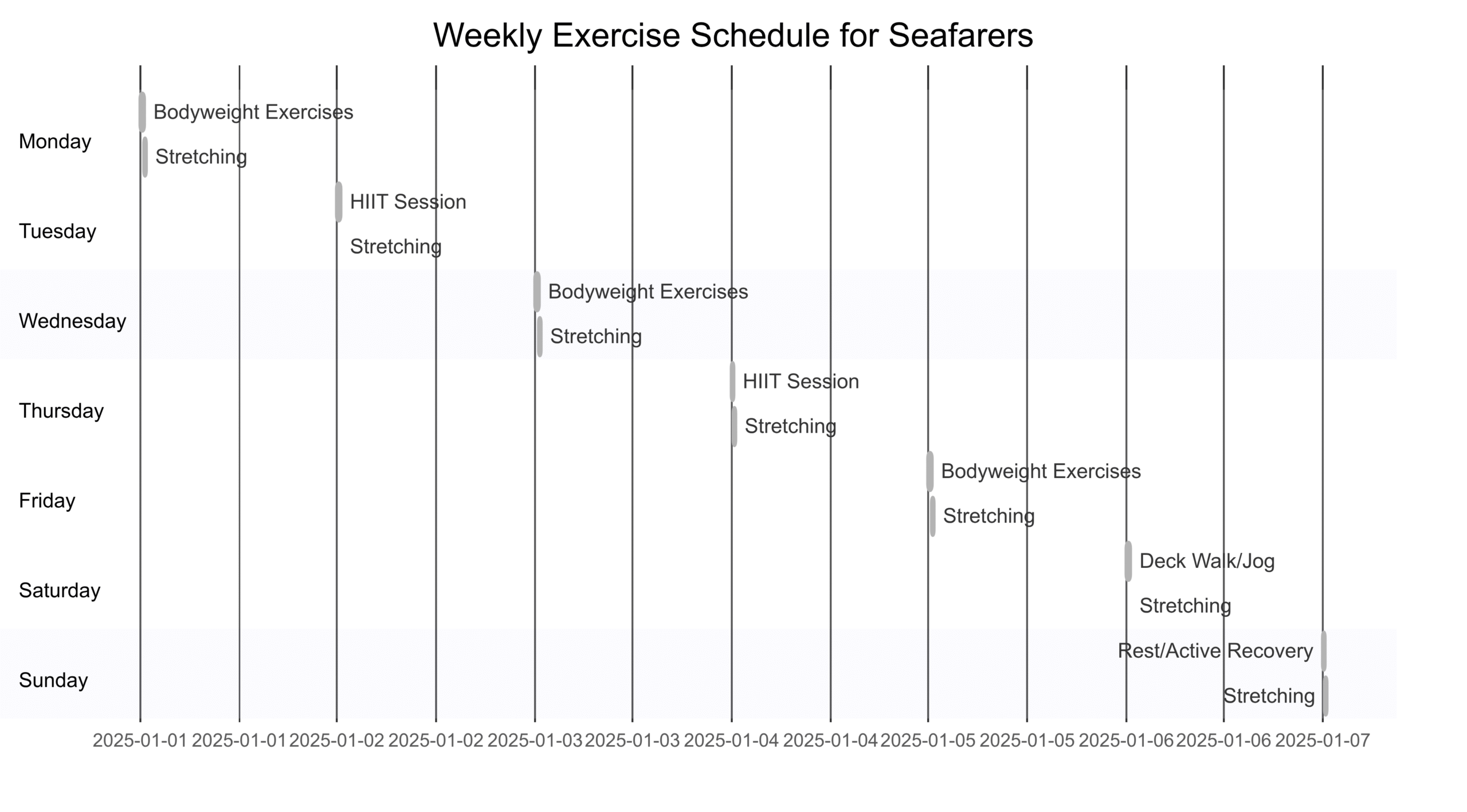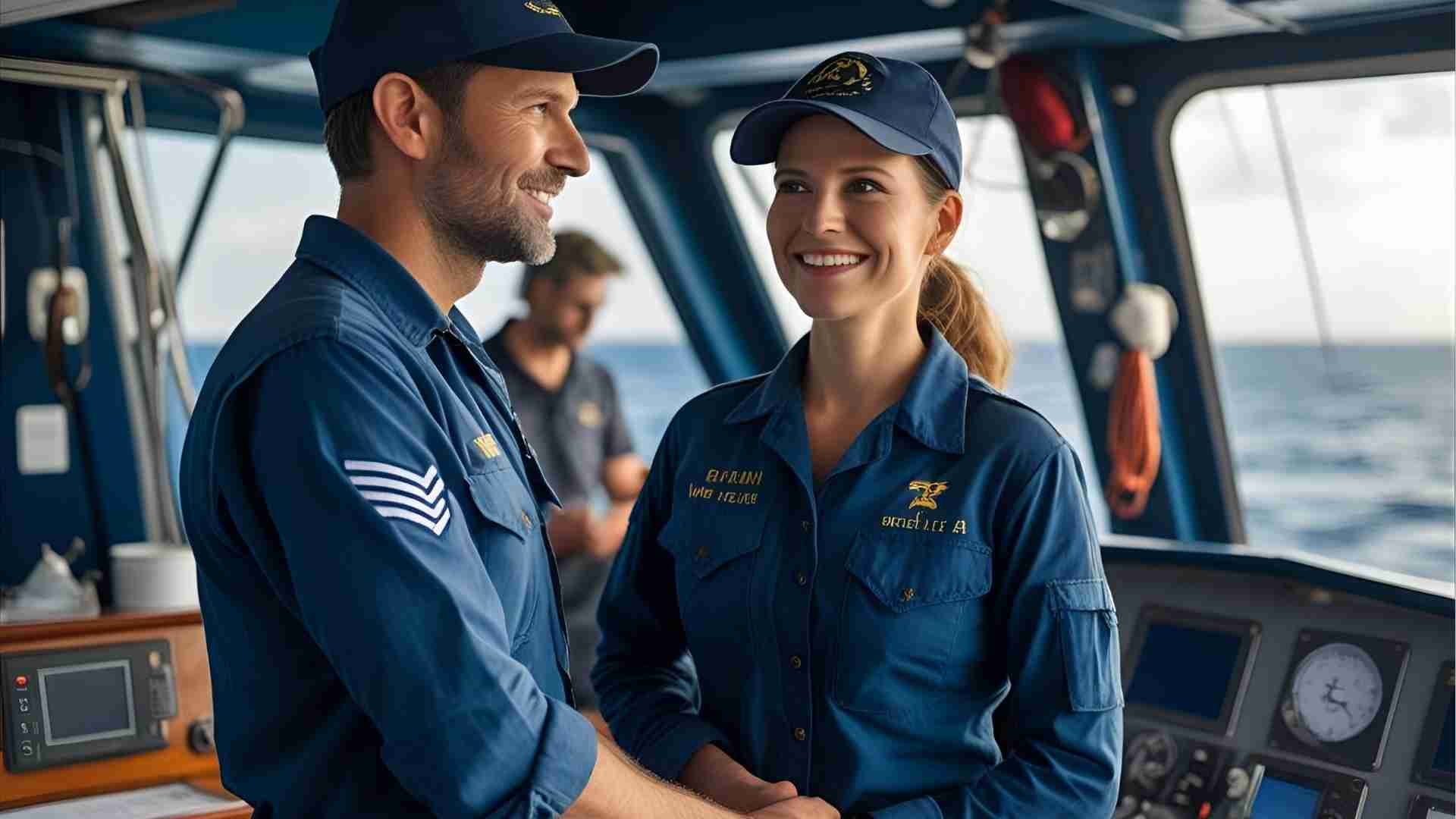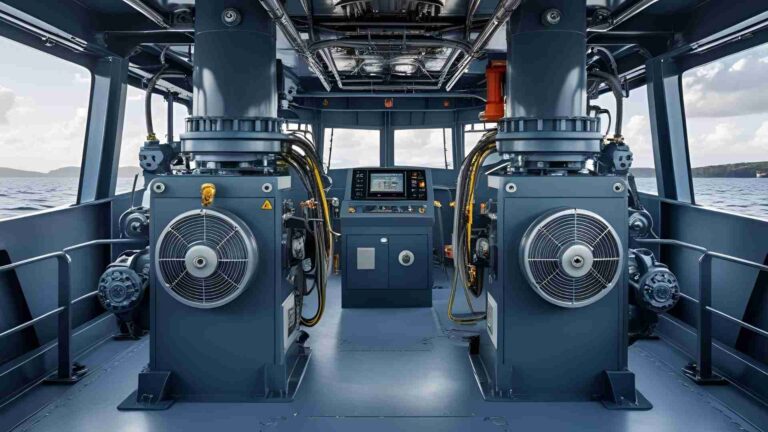Essential Health Tips for Crew Members During Long Voyages
Essential health tips for seafarers on long voyages: stay active, eat well, manage stress, and prioritize sleep to thrive at sea.
Life at sea is a unique blend of adventure and challenge. Seafarers face prolonged periods away from home, confined spaces, irregular schedules, and demanding work environments. These factors can strain both physical and mental health, making proactive wellness strategies essential. This comprehensive guide outlines evidence-based health tips to help crew members maintain their well-being during long voyages, ensuring they remain fit, focused, and resilient. From physical fitness and nutrition to mental health and emergency preparedness, these strategies empower seafarers to thrive in the maritime environment.
The Importance of Seafarer Health
Seafaring is a physically and mentally demanding profession. Crew members often work long hours, face isolation, and navigate unpredictable conditions, all of which can impact their health. Poor health not only affects individual seafarers but also compromises vessel safety and operational efficiency. By prioritizing health, seafarers can:
- Enhance Performance: Healthy crew members are more alert, productive, and capable of handling demanding tasks.
- Reduce Risks: Proper health practices lower the likelihood of occupational injuries and illnesses.
- Improve Morale: A focus on well-being fosters a positive onboard environment, reducing stress and burnout.
- Comply with Regulations: Adhering to health standards, such as those set by the Occupational Safety and Health Administration (OSHA), ensures compliance and avoids penalties.
This article provides actionable tips to address the physical, mental, and emotional challenges of life at sea, supported by practical strategies and resources.
Physical Health: Building Resilience at Sea
Physical health is the foundation of a seafarer’s ability to perform effectively. The confined spaces and demanding schedules of a ship can make staying active and eating well challenging, but with the right approach, crew members can maintain their physical well-being.
1. Stay Physically Active
Regular exercise is critical for combating the sedentary nature of life at sea. Physical activity boosts energy, improves sleep, reduces stress, and enhances cardiovascular health. Despite limited space, seafarers can incorporate effective workouts into their routines.
Exercise Options for Seafarers
- Bodyweight Exercises: Push-ups, squats, lunges, planks, and burpees require no equipment and can be done in small spaces like cabins or common areas.
- Resistance Bands: Lightweight and portable, resistance bands enable strength training exercises such as bicep curls, shoulder presses, and leg extensions.
- High-Intensity Interval Training (HIIT): Short bursts of exercises like jumping jacks or mountain climbers provide cardiovascular benefits in minimal time.
- Deck Walks or Jogs: When weather permits, walking or jogging on the deck offers fresh air and a change of scenery.
- Stretching and Yoga: Daily stretching or yoga sessions improve flexibility, reduce muscle tension, and prevent injuries.
Recommended Routine
Aim for at least 150 minutes of moderate aerobic activity per week, as recommended by the World Health Organization (WHO), combined with strength training twice weekly. A sample routine might include:
- Monday/Wednesday/Friday: 30 minutes of bodyweight exercises (e.g., 3 sets of 10 push-ups, 15 squats, 20 lunges, and a 1-minute plank).
- Tuesday/Thursday: 20-minute HIIT session (e.g., 30 seconds of jumping jacks, 30 seconds rest, repeated for 10 cycles).
- Daily: 10 minutes of stretching or yoga to improve flexibility and reduce stress.
Benefits of Exercise
- Improves cardiovascular health, reducing the risk of heart disease, a leading cause of death among seafarers.
- Enhances muscle strength and endurance, critical for physically demanding tasks.
- Boosts endorphins, improving mood and reducing stress.
Chart: Weekly Exercise Plan

2. Maintain a Balanced Diet
Proper nutrition fuels the body and mind, sustaining energy and supporting immune health. While fresh produce may be limited on long voyages, strategic meal planning can ensure a balanced diet.
Nutritional Guidelines
- Protein: Include lean proteins like canned fish, lentils, eggs, or beans to support muscle repair and satiety.
- Carbohydrates: Opt for whole grains (e.g., brown rice, oats) for sustained energy.
- Fruits and Vegetables: Consume fresh produce when available or canned options to ensure adequate vitamins and fiber.
- Healthy Fats: Incorporate nuts, seeds, or olive oil for heart health.
- Hydration: Drink at least 2 liters of water daily, adjusting for hot climates or physical exertion.
Tips for Healthy Eating
- Plan Meals: Coordinate with the galley to ensure balanced meals are available. Request high-fiber, low-sugar options when possible.
- Healthy Snacking: Stock up on nuts, dried fruits, or yogurt to avoid processed snacks high in sugar or sodium.
- Limit Processed Foods: Reduce consumption of sugary drinks, chips, and instant meals to prevent energy crashes and weight gain.
- Supplements: Consider multivitamins to address nutritional gaps, especially if fresh produce is scarce. Consult a healthcare provider before starting supplements.
Table: Sample Daily Meal Plan
| Meal | Food Choices | Nutritional Benefit |
|---|---|---|
| Breakfast | Oatmeal with dried fruit, boiled egg | Fiber, protein, sustained energy |
| Lunch | Grilled fish, brown rice, canned vegetables | Protein, complex carbs, vitamins |
| Dinner | Lentil stew, whole-grain bread, mixed nuts | Protein, fiber, healthy fats |
| Snacks | Yogurt, almonds, apple (if available) | Calcium, healthy fats, natural sugars |
Hydration Tip
Dehydration can impair focus and increase fatigue. Carry a reusable water bottle and sip throughout the day. Avoid excessive caffeine, which can contribute to dehydration.
3. Prioritize Sleep
Quality sleep is essential for physical recovery, mental clarity, and emotional resilience. Irregular schedules and noisy environments can disrupt sleep, but seafarers can optimize rest with these strategies.
Sleep Strategies
- Consistent Routine: Go to bed and wake up at the same time daily, even with varying shifts, to regulate your body clock.
- Sleep Hygiene: Create a dark, quiet, and cool sleeping environment. Use blackout curtains, earplugs, or an eye mask to block light and noise.
- Limit Stimulants: Avoid caffeine or nicotine 4-6 hours before bedtime to improve sleep quality.
- Nap Wisely: Short naps (20-30 minutes) can refresh without causing grogginess, especially for night-shift workers.
Goal
Aim for 7-8 hours of quality sleep daily. If shifts disrupt this, prioritize naps and maintain a consistent pre-sleep routine, such as reading or deep breathing.
Benefits of Sleep
- Enhances cognitive function, improving decision-making and safety.
- Reduces fatigue-related errors, critical in high-stakes maritime roles.
- Supports emotional regulation, reducing stress and irritability.
Mental Health: Coping with Isolation and Stress
Mental health is as critical as physical health for seafarers, who face prolonged isolation, demanding workloads, and limited privacy. Proactive mental health strategies can mitigate stress, anxiety, and loneliness.
4. Manage Stress Effectively
Stress is a common challenge at sea, driven by long hours, high-pressure tasks, and separation from loved ones. Effective stress management techniques can help seafarers stay resilient.
Stress-Relief Techniques
- Mindfulness Meditation: Spend 5-10 minutes daily focusing on your breath or a guided meditation to calm the mind.
- Progressive Muscle Relaxation (PMR): Tense and release muscle groups to reduce physical tension and anxiety.
- Deep Breathing: Practice diaphragmatic breathing (inhale for 4 seconds, hold for 4, exhale for 6) to lower stress levels.
- Journaling: Write down thoughts, goals, or things you’re grateful for to process emotions and maintain perspective.
Example: Daily Gratitude Practice
At the end of each day, write down 1-2 things you’re thankful for (e.g., a supportive crew member, a beautiful sunset). This practice fosters positivity and reduces stress.
5. Stay Connected
Isolation is a significant mental health challenge for seafarers. Maintaining connections with loved ones and crew members can combat loneliness.
Connection Strategies
- Communicate Regularly: Use email, messaging apps, or satellite calls to stay in touch with family and friends. Schedule weekly calls if possible.
- Build Onboard Community: Participate in crew activities, such as game nights, movie screenings, or group workouts, to foster camaraderie.
- Utilize Technology: VoyageX AI Crew Management software streamlines communication and scheduling, helping crews stay connected and organized.
Benefits of Social Connection
- Reduces feelings of loneliness and isolation.
- Enhances team cohesion, improving workplace morale.
- Provides emotional support during challenging times.
6. Engage in Purposeful Hobbies
Hobbies keep the mind engaged, reduce boredom, and provide a sense of accomplishment. Seafarers can use downtime to pursue meaningful activities.
Hobby Ideas
- Reading: Bring e-books or physical books to enjoy during breaks.
- Creative Outlets: Sketching, writing, or photography can serve as emotional outlets.
- Skill Development: Take online courses or study maritime-related skills through platforms like the Maritime Institute of Technology and Graduate Studies (MITAGS).
- Games: Play card games, chess, or puzzles with crew members to build connections.
Tip
Pack lightweight hobby materials, such as a journal, sketchpad, or e-reader, to maximize limited cabin space.
Additional Health Considerations
Beyond fitness, nutrition, and mental health, seafarers must address hygiene, seasickness, and emergency preparedness to ensure overall well-being.
7. Practice Good Hygiene
Close quarters on ships increase the risk of illness. Maintaining hygiene is critical for preventing the spread of communicable diseases.
Hygiene Tips
- Handwashing: Wash hands with soap for at least 20 seconds before eating and after using the bathroom.
- Cabin Cleanliness: Regularly disinfect high-touch surfaces like doorknobs and desks.
- Shared Spaces: Keep communal areas like bathrooms and kitchens clean to protect crew health.
Table: Hygiene Checklist
| Task | Frequency | Purpose |
|---|---|---|
| Handwashing | Before meals, after bathroom use | Prevents illness spread |
| Disinfect Cabin Surfaces | Weekly | Reduces germs on high-touch areas |
| Clean Shared Spaces | Daily | Maintains crew-wide health |
8. Prepare for Seasickness
Seasickness can affect even experienced seafarers, especially on rough voyages. Being prepared can minimize discomfort.
Seasickness Strategies
- Medications: Use over-the-counter remedies like antihistamines or motion sickness patches. Consult a doctor for prescriptions if needed.
- Natural Remedies: Stay on deck, focus on the horizon, and breathe fresh air to reduce nausea.
- Diet: Eat light, non-spicy meals to prevent stomach upset.
Resource
For more information, refer to the Mayo Clinic Guide to Motion Sickness.
9. Monitor Health and Prepare for Emergencies
Limited access to medical facilities at sea makes proactive health monitoring essential.
Health Monitoring Tips
- Pre-Voyage Check-Ups: Get a full medical evaluation before departure to identify and address health issues.
- Medications: Carry an adequate supply of prescribed medications and follow dosages.
- First Aid Kit: Keep a personal kit with essentials like bandages, pain relievers, and seasickness remedies.
Emergency Preparedness
- Participate in Drills: Engage fully in safety drills to build confidence and preparedness.
- Mental Rehearsal: Visualize responses to emergencies to improve reaction times.
- Medical Training: Consider courses like Medical Person-In-Charge training from MITAGS for vital diagnostic and emergency skills.
The Role of Employers in Seafarer Health
Employers play a critical role in supporting crew health. By fostering a health-conscious environment, companies can enhance employee performance and morale while meeting regulatory standards.
Employer Strategies
- Education: Provide training on occupational health risks, nutrition, and stress management.
- Resources: Ensure access to nutritious meals, exercise equipment, and mental health support.
- Fatigue Prevention: Adhere to work-rest schedules mandated by international maritime regulations.
- Healthcare Access: On large vessels, employ trained medical staff or provide access to telehealth services.
Example: VoyageX AI Crew Management
VoyageX AI Crew Management software enhances crew well-being by streamlining communication, scheduling, and wellness support. Priced at approximately $500-$1,500 per vessel annually (depending on size and features), it offers tools to reduce stress and improve morale.
Health Risks Specific to Seafarers
Seafarers face unique health challenges that require tailored solutions. Understanding these risks helps crew members and employers take preventive measures.
Common Health Risks
- Cardiovascular Disease (CVD): The leading cause of death among seafarers, often exacerbated by poor diet and stress.
- Fatigue: Long hours and minimal crew sizes increase fatigue-related injuries.
- Communicable Diseases: International travel raises the risk of diseases like malaria or tuberculosis.
- Cancer: Exposure to UV light and hazardous substances increases occupational cancer risk.
- Musculoskeletal Disorders: Prolonged physical tasks without exercise can lead to joint and muscle issues.
- Hand-Arm Vibration Syndrome (HAVS): Prolonged use of power tools can cause discomfort or disability.
Chart: Health Risk Mitigation Flow

Conclusion
Maintaining health during long voyages is a multifaceted challenge that requires a proactive approach. By staying active, eating a balanced diet, prioritizing sleep, managing stress, and preparing for emergencies, seafarers can thrive in the demanding maritime environment. Employers can support these efforts by providing education, resources, and tools like VoyageX AI Crew Management. With these strategies, crew members can enhance their physical and mental resilience, ensuring a healthier, more fulfilling life at sea.
For further resources, explore the World Health Organization’s guidelines on healthy eating, the Mayo Clinic’s guide to motion sickness, or MITAGS’ training programs for seafarers.
Happy Boating!
Share Essential Health Tips for Crew Members During Long Voyages with your friends and leave a comment below with your thoughts.
Read New Boat with Oars Images 4K HD Wallpapers until we meet in the next article.





